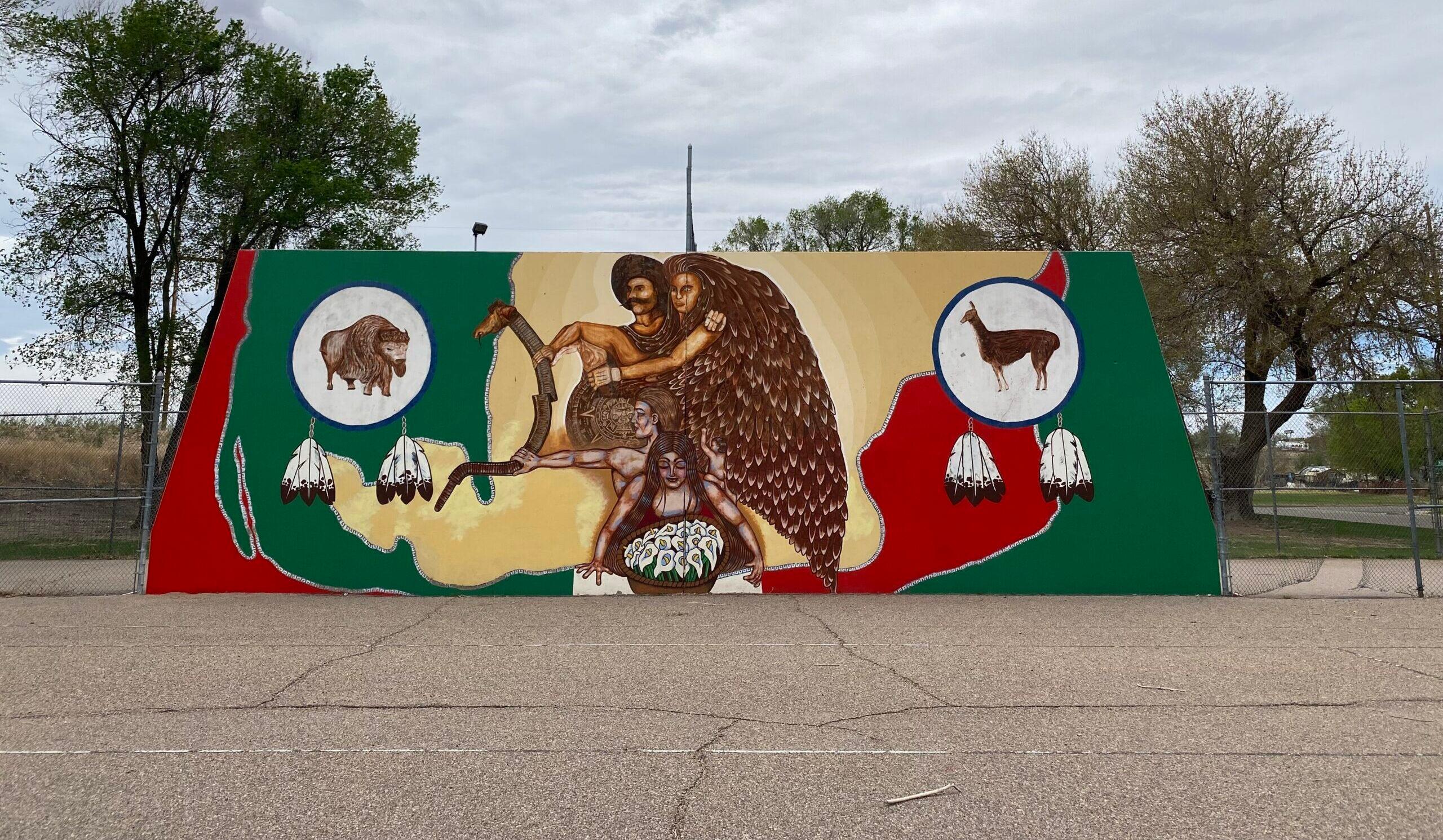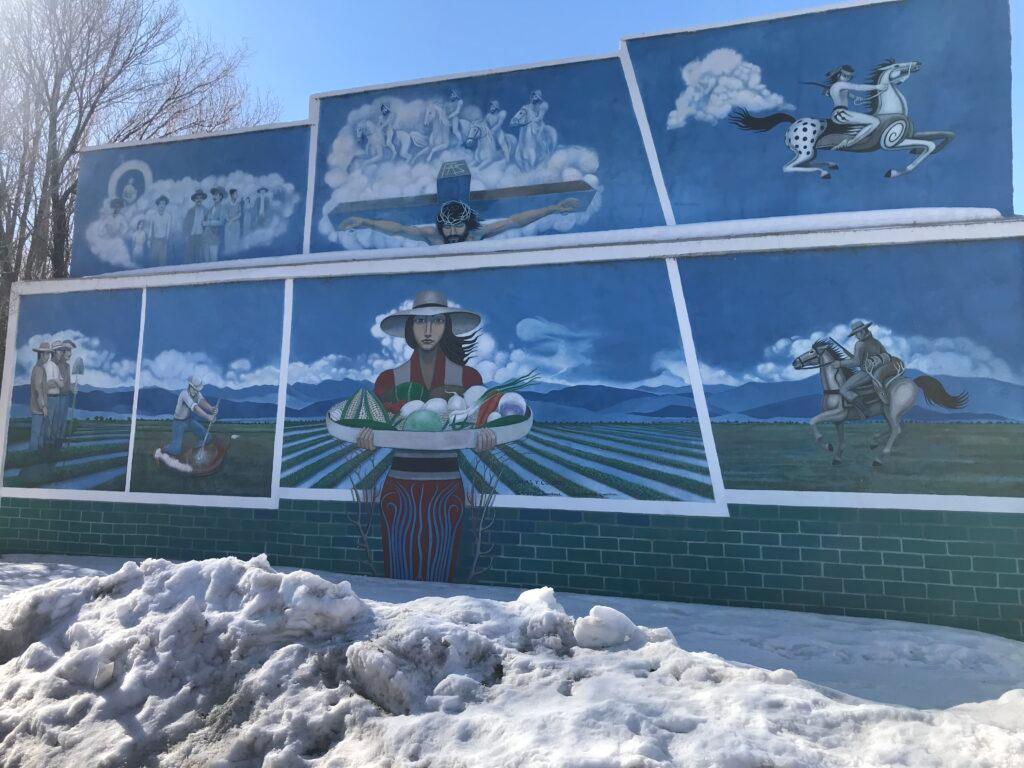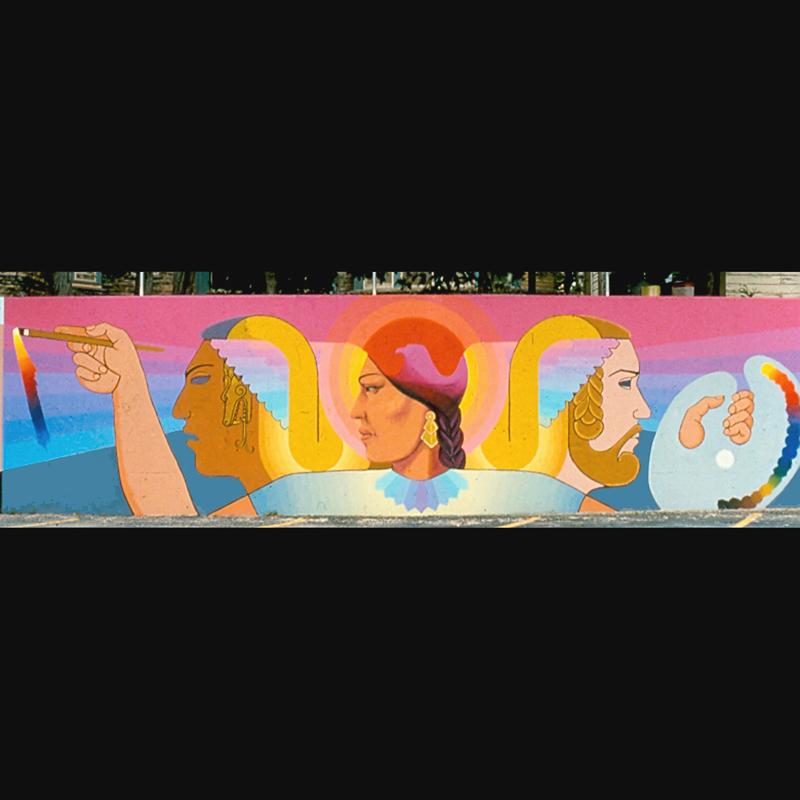
Colorado's Chicano murals are among the most endangered historic places in the nation. That includes several in southern Colorado.
A large untitled mural in Pueblo's Plaza Verde Park painted by Leo Lucero in 1978 symbolizes the spirit of the Indigenous people and the land before colonization. Another mural in San Luis was painted in 1986 by Carlos Sandoval. Sierras y Colores commemorates the oldest town in Colorado - San Luis de la Culebra - founded in the 1840s by Hispano settlers when the area was part of Mexico.
Lucha Martinez de Luna directs the group working to preserve the murals, which she describes as historical textbooks for Chicano/a/x communities.
"The one in San Luis is very, very significant," she said. "This is where it all began for many Chicano families throughout the state and in northern New Mexico. That's where many individuals consider that's where their ancestral roots are."

The most endangered historic places designation comes from the National Trust for Historic Preservation, a group that aims to preserve places central to the image of the U.S.
"It really helps us with building this awareness about the murals," she said. "This is what we have always envisioned as our first step is spreading the word, you know, 'These murals mean something to our community and please stop erasing them.'"
According to the National Trust for Historic Preservation, "the nationwide Chicano/a/x Movement of the 1960s and ‘70s integrated political activism with cultural education in arts, specifically murals, to reflect Chicano/a/x histories, bring art into neighborhoods, inspire pride in heritage, and strengthen communities in response to systemic racism, prejudice, and violence."
Many of the murals show historical events like the Spanish colonization of the Americas, annexation of the Southwest from Mexico, and issues of discrimination, forced migration and land loss.
Martinez de Luna estimates around 40 murals remain throughout the state. While she hopes others will be found, many have already been lost.
"It's tricky," she said, describing efforts to preserve the murals. "These murals are located in redlined communities, which means it was very intentional in not giving people of color access to mortgages and being able to buy property. So, especially with some of the earlier murals, the community did not own the buildings."
That means property owners oftentimes don't know the significance of the artwork and they technically don't have to agree to preserve it. Martinez de Luna said the designation from the National Trust for Historic Preservation will help with future conversations about protecting the murals from being whitewashed and painted over.
Colorado's harsh climate is also a threat to the art. Vandalism has proven to be a problem throughout the years, as well.

Ron Serna has worked to protect and preserve the mural in Pueblo's Plaza Verde Park for several decades. Graffiti is regularly scrubbed off the piece, he said, and it's been repainted several times by the original artist and community members, most recently last year.
"It looked better when it was first made, but we've had to refurbish it and we had four or five different artists trying to get into that little detail… just trying to get it back the way it was," he said.
Serna hopes the push to protect the mural makes people appreciate it more. He said signage explaining the meaning of the piece might deter vandals.
"Leo [Lucero] painted it as a dedication to the community, to la raza, and some people wanted to have it taken off and put something else on there, but it's been there too long. It's historical," Serna said.
Martinez de Luna said Lucero's mural may be easier to preserve than others, as it's been protected by residents and the city of Pueblo for years. The ultimate goal is to have the works designated as historical landmarks.
Another goal, she said, is to learn about other murals worth protecting.
"We want the community to connect with us. We have a form on our website where we're asking people to tell us about murals in their community that they want to protect," she said.
Other Chicano murals can be found in Denver, Aurora, Commerce City, Brighton, Greeley, and Antonito.








